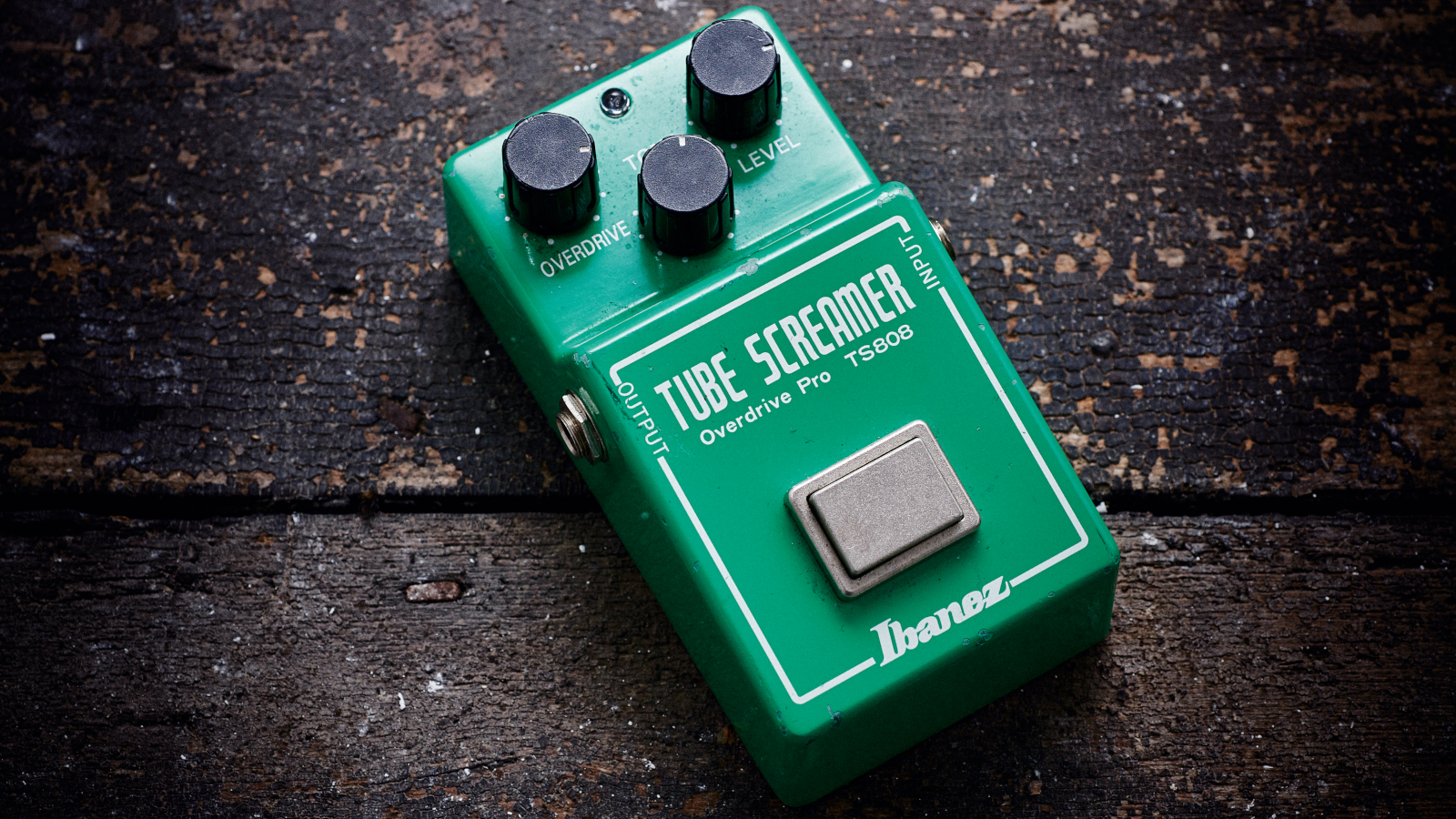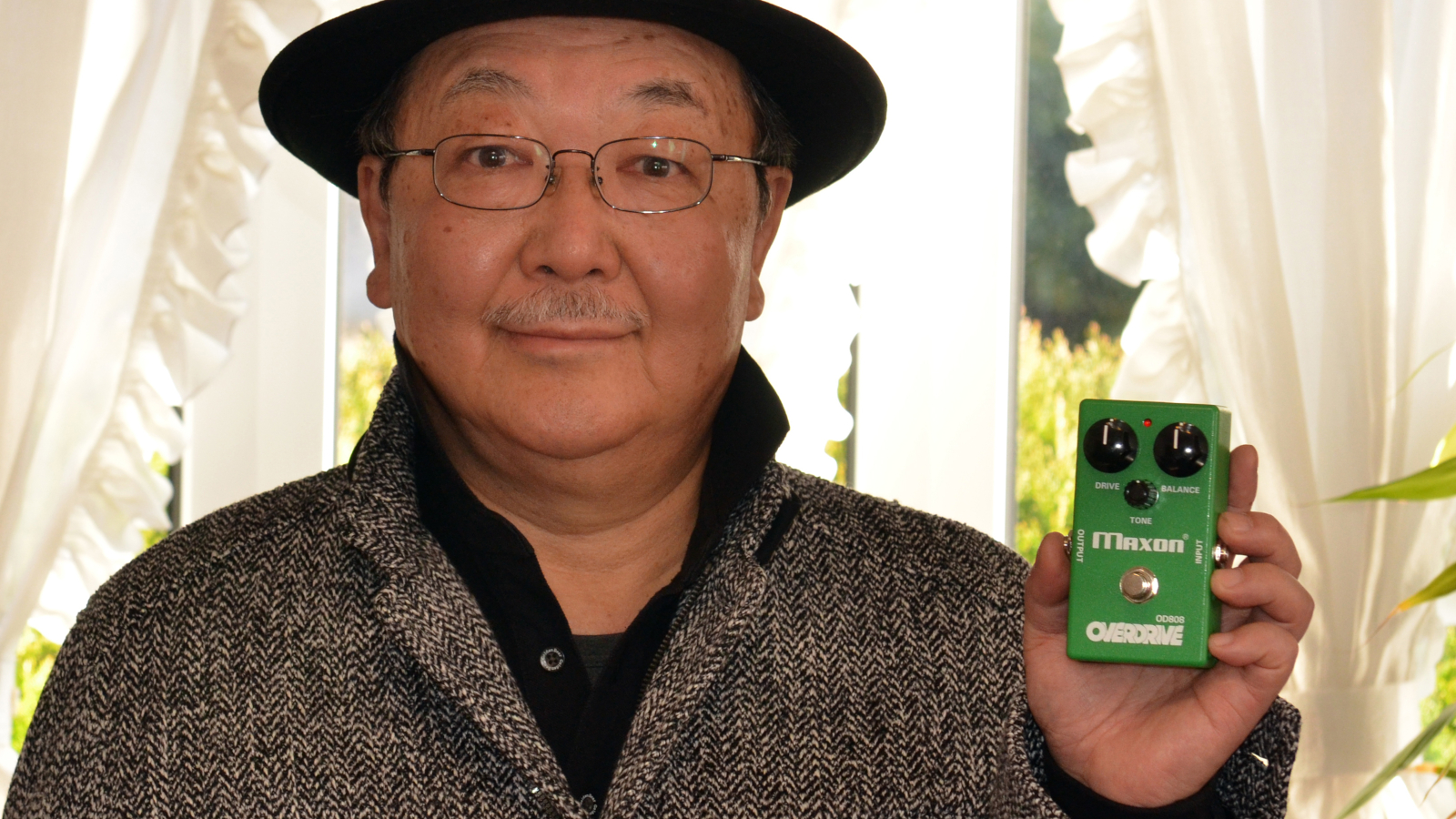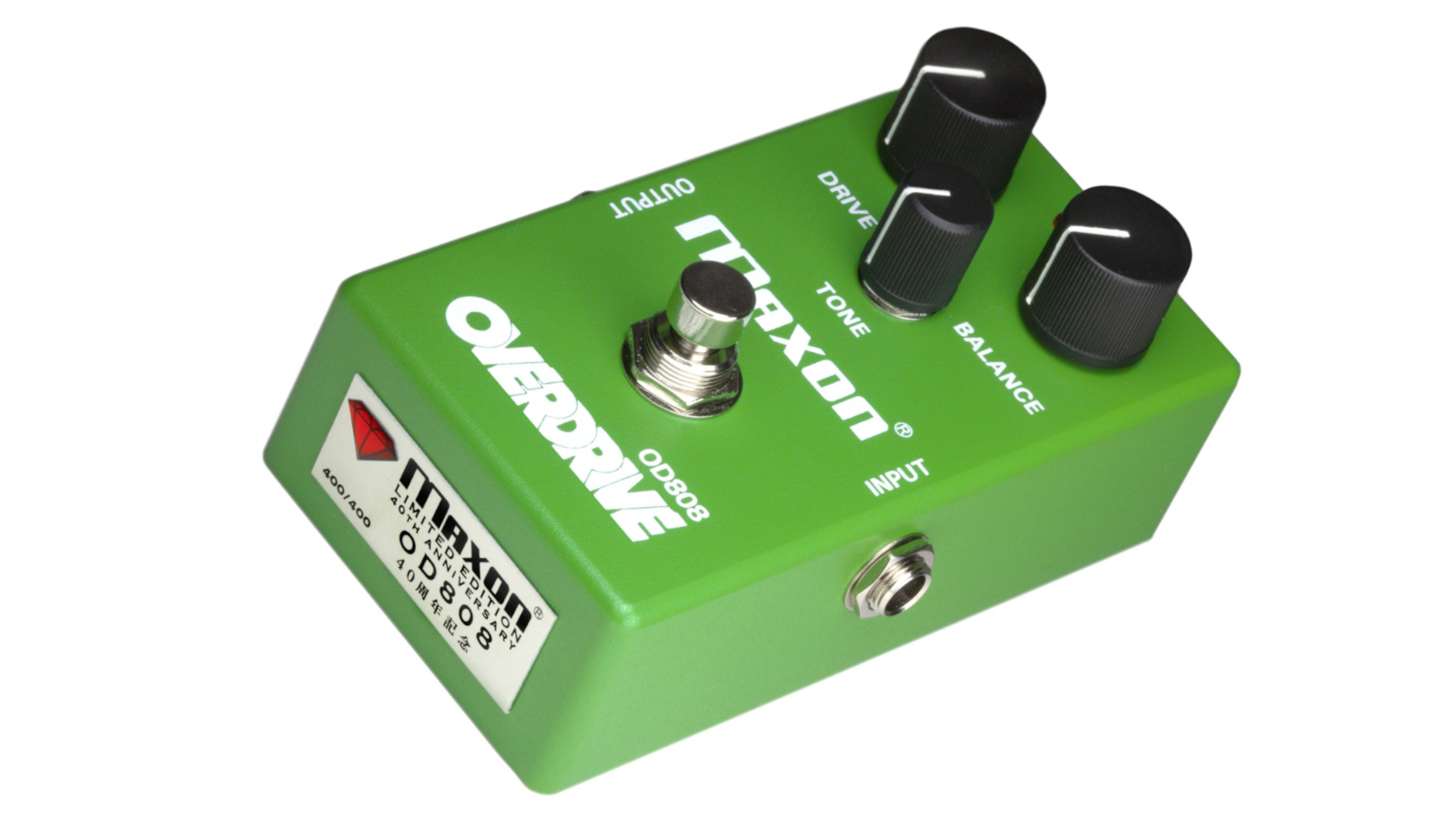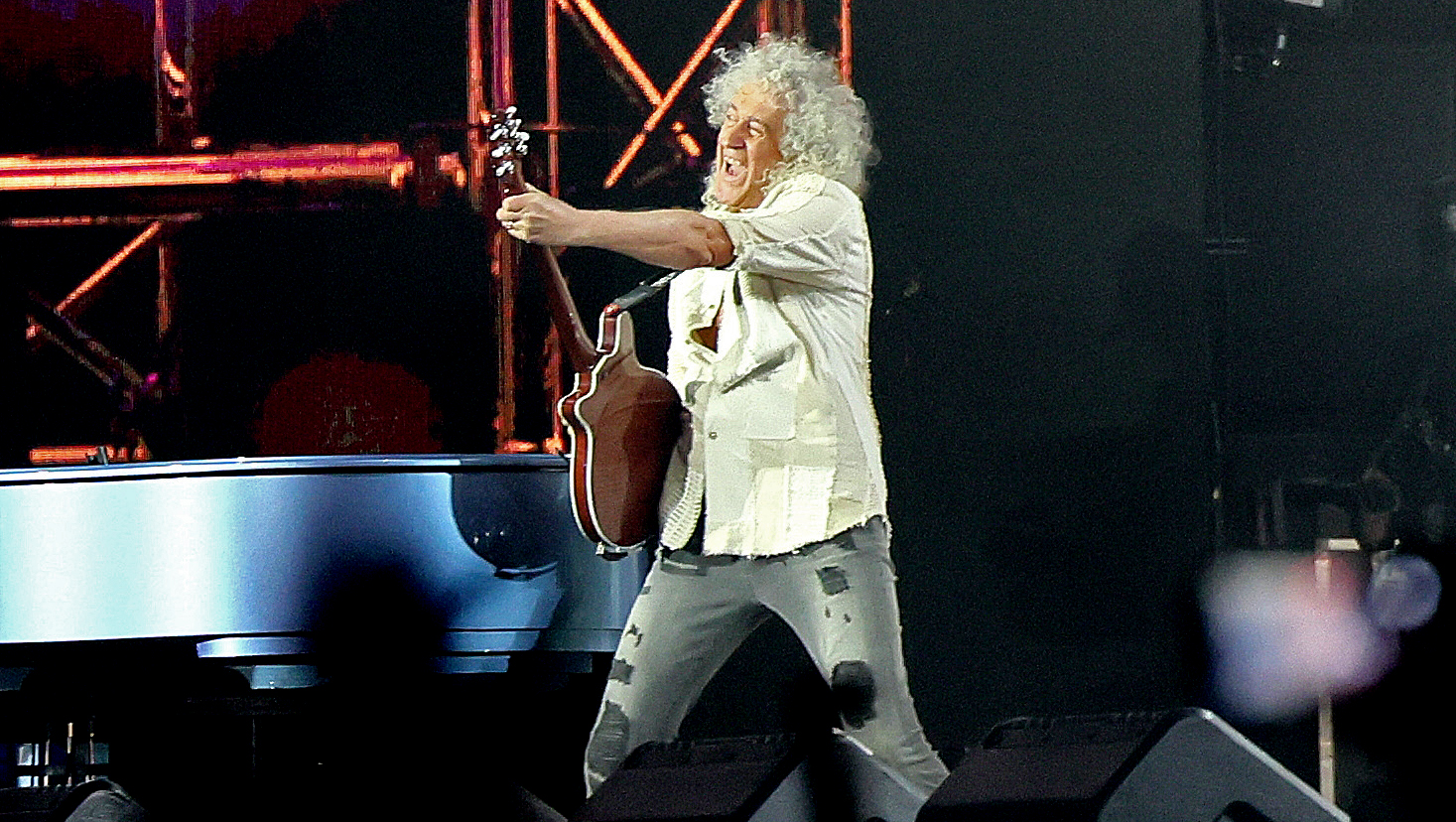“I Did Not Dream That the 808 Would Become so Famous”: Tube Screamer Inventor Susumu Tamura Tells the Definitive Story of This Iconic Stompbox
“I never thought that a pedal would ever be considered vintage,” said the former Maxon electronics engineer

In 1979, Japanese engineer Susumu Tamura created the game-changing Maxon OD808. Subsequently rebranded for Ibanez as the TS808 Tube Screamer, this tube-sounding distortion/boost pedal with midrange-enhanced sound quickly became a must-have for legions of guitarists following its use by Stevie Ray Vaughan and Eric Johnson. It’s gone on to inspire countless imitations by scores of pedal makers ever since.
Guitar Player spoke with Tamura-san, who resides in Matsumoto, Japan, about this legendary stompbox...
What was the first pedal you designed when you started working for Maxon?
It was a phaser, the PT999. I really liked the sound of its spatial spread, which was not present in pedals like fuzz, distortion, booster and wah.
Did you design any distortion pedals before the OD808?
The OD880 was my first overdrive design, and it was popular and used by the very famous Japanese guitar player Char. With the OD808, the design goal was not to obtain the overdrive effect alone but to create the sound of the guitar amplifier and overdrive pedal combined.
Did you play guitar yourself?
Get The Pick Newsletter
All the latest guitar news, interviews, lessons, reviews, deals and more, direct to your inbox!
I could not play the guitar – same as Leo Fender – but I could tune one. However, during the development of the 19-inch rack Harmonizer, called the Harmonics Delay HD 1000, I was forced to learn music theory.
I understand that the OD808 was designed to compete with the Boss OD-1, but that you wanted it to have a more tube-like sound. Were there any particular tube amps that you used as references?
At that time, I mainly used Fender tube amplifiers for development and audio tests of the pedal, specifically a 1968 Fender Twin Reverb and a Vibrolux Reverb. Occasionally, I used a Marshall 1959 Super Lead.
Did you use any guitar players to help voice the OD808?
The final determination of almost all of Maxon’s pedals was done by [guitar instructor] Shiro Tanigawa. [Tanigawa also created the sample settings that appeared in Maxon manuals].

What were some of the challenges to creating a solid-state circuit that would sound and feel like a tube circuit?
The main challenge was to avoid a dramatically changed effect that didn’t leave any of the guitar’s original sound, like fuzz and distortion pedals of the time. I wanted to create an effect with the original sound of the guitar remaining, and with a softer distortion.
Also, the nuances of the player’s picking needed to come out, and it was challenging to implement that as a component of the total system of guitar, pedal and amplifier while also creating a synergy with the amplifier.
Can you tell us about the different op amps used for the OD808 and TS808?
At the time, the first operational amplifiers that I evaluated for trial manufacture were the Fairchild UA741 and Motorola MC174. All were imported goods, and the price was more than 20 times the current price. They were so expensive that I hesitated to use them for Maxon products. The Fairchild UA1458 and Motorola MC1458 were also offered. However, the price was almost the same as the UA741.
The UA1458 was eventually adopted for the earliest OD808/TS808 narrow-case pedals. The OD808/TS808 were both remodeled several years later to use the Raytheon RC4558, which had improved audio characteristics to the UA1458. After that, the RC4558, JRC NJM4558 and [Texas Instruments] TI RC4558 were installed, depending on the production lot.
[Sammy Ash] said, 'This sounds like a screaming tube amp'
Susumu Tamura
How did Maxon start making effects for Ibanez, and did you make any changes to the OD808 circuit when it became the TS808?
At that time, Maxon did not have the ability to export products abroad on its own. Therefore, Maxon concentrated on domestic sales only, and overseas export was supplied under the export company Hoshino Gakki’s Ibanez brand or the U.S. Buyers brand. Back then, almost all products, in addition to the TS808 and OD808, were supplied with the same circuit and the same specifications but under different brands.
Until we shut off the product supply from Maxon to Ibanez in 2003, there were some models with different names and designs, but the contents were basically the same. I think you can easily find Maxon’s printing and engraving on the printed circuit board or battery lid of vintage Ibanez pedals. These are proof that the pedals are the same as the Maxon versions.
Who came up with the name Tube Screamer?
The name was suggested by the Sam Ash Music family, by Jerry’s son Sammy Ash [Jerry is the son of founder Sam Ash]. We first visited Sam Ash Music at West 48th Street, Manhattan, and talked to [Jerry’s son] Richard Ash. Since Sammy was familiar with the sound of pedals, Richard told me to speak with him.
At this time, we brought a prototype of the Micro Teacher Mini Amp GA-10 [a 1970s-era pedal-size amp] and asked Sammy to evaluate it. When I connected the external speaker terminal of GA-10 to the input of the guitar amplifier, it suddenly made a screaming sound.
Sammy asked, “Do you know how the Cry Baby pedal got its name?” “Yes,” I said, “it sounds like a baby crying.” And he said, “This sounds like a screaming tube amp.” So when the Maxon OD808 Overdrive Pro was born, Ibanez’s overdrive was named the TS808 Tube Screamer Overdrive Pro.

Can you talk about the pedals you designed after the OD808?
The OD9/TS9 and other models that are successors to the OD808 are also overdrives that I designed. I worked on most of the pedals Maxon released from 1974 to around 1985. and these include distortion, auto wah, compressor, analog delay, digital delay, multi-effector and the Digitally Controlled Processor [DCP] series. The development of wireless microphones became my main job from around 1986 to 2000.
You must be very proud of the revolution in guitar distortion effects that you started by creating the OD808.
Thank you. I am very honored. When designing it, I did not dream that the 808 would become so famous. At the time, if a guitar was considered vintage, it received high evaluation, so I was jealous of the guitar. I never thought that a pedal would ever be considered vintage. I also think that it is wonderful that the same 808 has continued to be loved.
Do you have a favorite story about the 808?
At the time that I designed the 808, we exhibited several pedals of the prototype TS808 that we completed after working all night at Musikmesse in Frankfurt. Then, a sad incident happened to me.
On the evening of the first day of the show, a TS808 prototype was missing. On the second day, another one was missing. A trading company person who was there comforted me by saying, “That pedal is surely wonderful. The unpopular pedals are not stolen.”

Art Thompson is Senior Editor of Guitar Player magazine. He has authored stories with numerous guitar greats including B.B. King, Prince and Scotty Moore and interviewed gear innovators such as Paul Reed Smith, Randall Smith and Gary Kramer. He also wrote the first book on vintage effects pedals, Stompbox. Art's busy performance schedule with three stylistically diverse groups provides ample opportunity to test-drive new guitars, amps and effects, many of which are featured in the pages of GP.
"The only thing missing is the noise from the tape loop." We review the Strymon EC-1 Single Head dTape Echo, a convincing take on a very special vintage tube Echoplex
"BigSky MX will be replacing the BigSky as my go-to reverb pedal. I’ve heard nothing that covers all the bases with such pristine and detailed audio quality." We crowned the Strymon BigSky MX the champ of multi-reverb pedals










